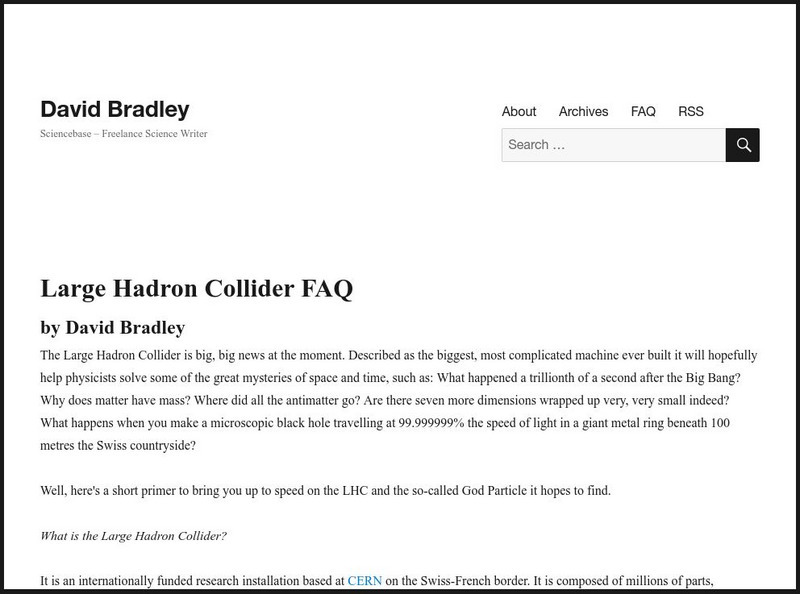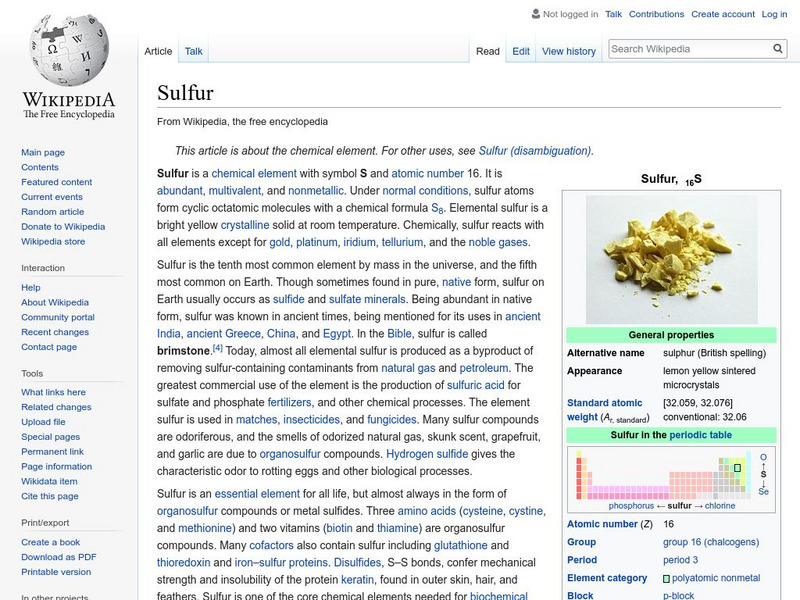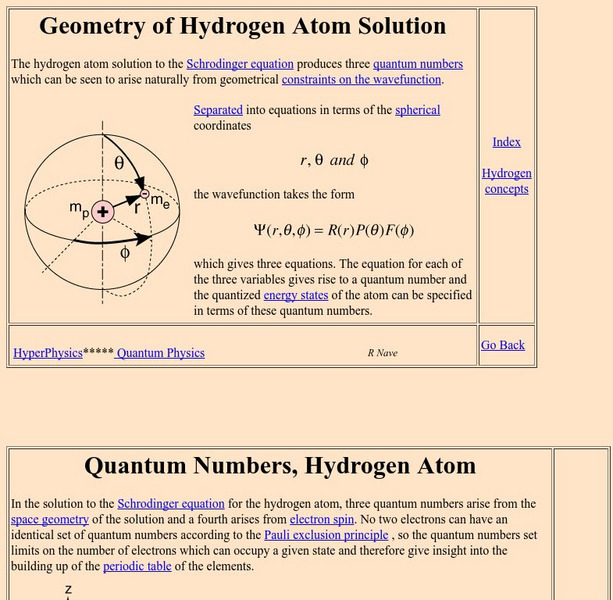National High Magnetic Field Laboratory
Magnet Academy: Joseph John Thomson
Joseph John Thomson, better known as J. J. Thomson, was a British physicist who first theorized and offered experimental evidence that the atom was a divisible entity rather than the basic unit of matter, as was widely believed at the...
National High Magnetic Field Laboratory
Magnet Academy: Timeline of Electricity and Magnetism: 1940 1959
Defense-related research leads to the computer, the world enters the atomic age and TV conquers America.
Environmental Chemistry
Environmental chemistry.com: Periodic Table Berkelium
A nice summary of the chemical and physical properties of berkelium as well as additional information. Very nicely done and helpful.
National High Magnetic Field Laboratory
Magnet Academy: Isidor Isaac Rabi
Isidor Isaac Rabi won the Nobel Prize in Physics in 1944 for his development of a technique for measuring the magnetic characteristics of atomic nuclei. Rabi's technique was based on the resonance principle first described by Irish...
BBC
Bbc Mundo: El Ano Magico De Einstein
A special feature on Einstein from the BBC, in Spanish. Follow Einstein's life, including his role in the development of the atomic bomb; learn about the impact and practical applications of his work; or watch a speech he gave in 1950...
Other
Sciencebase and Elemental Discoveries: Sciencebase: Large Hadron Collider
Learn facts about the Large Hadron Collider project and its impact on the world of physics research.
National High Magnetic Field Laboratory
Magnet Academy: Edward Purcell
Edward Mills Purcell was an American physicist who received half of the 1952 Nobel Prize for Physics for his development of a new method of ascertaining the magnetic properties of atomic nuclei. Known as nuclear magnetic resonance...
Wikimedia
Wikipedia: Sulfur
This site from the Wikipedia Encyclopedia provides information on atomic properties, physical properties and notable characteristics of sulfur can be found on this informative site. Links are provided for additional information.
National High Magnetic Field Laboratory
Magnet Academy: Paul Dirac
Paul Adrien Maurice Dirac was an outstanding twentieth century theoretical physicist whose work was fundamental to the development of quantum mechanics and quantum electrodynamics. He was awarded the Nobel Prize for Physics jointly with...
Famous Scientists
Famous Scientists: Ernest Rutherford
This short biography about Ernest Rutherford explains how he became known as the father of nuclear chemistry and physics.
Georgia State University
Georgia State University: Hyper Physics: Quantum Numbers, Hydrogen Atom
This tutorial contains links to explanations of the four different quantum numbers (principal, orbital, magnetic, and spin). Equations for each are provided.
Other
Environmental Engineering: Graduate School Directories
This is a website with links to schools offering graduate programs in Nuclear Engineering.
Famous Scientists
Famous Scientists: Wolfgang Ernst Pauli
Learn about the life and work of one of the pioneers of quantum physics, Wolfgang Ernst Pauli.
Indiana University
Parity Violation in Atomic, Nuclear and Hadronic Systems
Describes a major workshop on parity. A wonderful list of topics about parity and a really substantial scientific proposal. This is how scientists work in group. A complete description of why parity is so significant. There's a large...
Georgia State University
Georgia State University: Hyper Physics: Hund's Rules
A complete overview of Hund's rules including exceptions.
Georgia State University
Georgia State University: Hyper Physics: Hund's Rules
An excellent overview of Hund's Rules. Discusses all three rules thoroughly with provided diagrams.
Texas Instruments
Texas Instruments: Electron Vocabulary
This StudyCards stack enables students to review the vocabulary used in studying electron behavior.
Simon Fraser University
Chem1 Virtual Textbook: The Quantum Atom
Acting as a subtopic of the General Chemistry Virtual Textbook's section on Atoms and the Periodic Table, this site specifically addresses the quantum atom and related topics. The related topics include the wave function and its physical...
Michigan State University
Michigan State University: Elementary Physics Ii: The Pauli Exclusion Principle
The Pauli Exclusion Principle requires that all electrons in an atom have unique energy levels.
University of Maryland
University of Maryland: Optics, Electromagnetic Waves
This site from the University of Maryland provides part of an anecdotal history of optics and the study of light. Extremely thorough treatment of how scientists came to believe in the wave nature of light, the idea of an electromagnetic...
Environmental Chemistry
Periodic Table of Elements: Gallium
A very detailed look at the element Gallium, a member of the Boron Group.
Environmental Chemistry
Periodic Table of Elements: Indium
A very detailed look at the element Indium, a member of the Boron Group.
Environmental Chemistry
Periodic Table of Elements: Thallium
A very detailed look at the element Thallium, a member of the Boron Group.
Math Science Nucleus
I. Science Ma Te: Integrating Science, Math and Technology
This site offers a wealth of online textbook-related materials that encourage the discovery of science in the world around us. Enter the site to access material on specific topics. Each section contains reading material (complete with...
Other popular searches
- Atomic Physics Bohr
- Atomic Physics Rutherford
- Sub Atomic Physics
- Atomic Physics "Elements
- Atomic Physics Elements
- "Elements" Atomic Physics
- Atomic Physics \"Elements

















